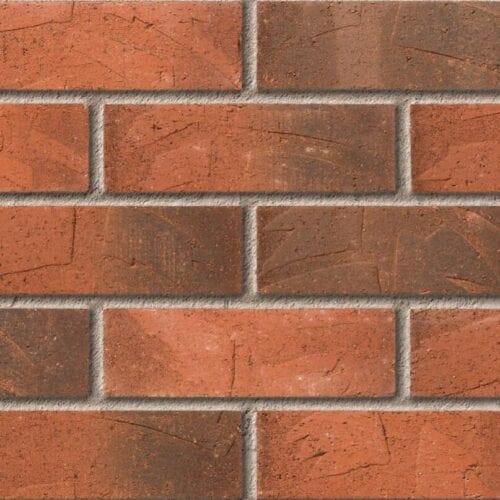UK bricks have been subject to metric standards since 1970, which means that almost all bricks available to buy in Britain today are 65mm x 215mm x 112.5mm. Bricks are made from natural clay products so there is sometimes a little deviation from these figures.
Bricks began in Britain with the Romans and were initially sized to fit comfortably in the hands of the person laying them. In 1568 a law was passed to define the sizes of commercially available bricks; however, it took until the mid-1800s for a regular size to be adopted.
Handmade heritage bricks, and bricks made before 1970, usually measure close to 9 x 4.5 x 3.5 inches (228.5 x 114.3 x 76.2). Older bricks will be smaller, more irregular, and likely use deeper mortar beds to cope with the different sizes.

Modern bricks are much more reliable as they are subject to comprehensive quality standards in order to meet today’s coordinated design criteria.
Size Matters
For most of us, the average size of a brick batch is not that important, however, if your project is in a conservation area, or is subject to other strict design expectations, then it’s worth knowing about range and tolerance classifications.
Standard UK Brick Tolerances
In simple terms, tolerance means the difference between the stated size and the actual size of the bricks in the pack on the pallet. A T2 tolerance usually gives the smallest deviation from the design size, and T1 (or TM) the greatest.
T2 tolerance will mean a brick is larger or smaller by 2mm in height, 3mm in width and 4mm in length.
T1 tolerance allows for a 3mm difference in height, 4mm in width, and 6mm in length (which is more than half a perp, or vertical mortar joint).
So, on a job where size matters, say you have a series of large wall panels to infill on a steel-framed building, specifying a T2 tolerance will give you better consistency of brick dimensions.
Specifying T2 on a larger project will also give you better quantity certainty, saving you from over or under-ordering.
On smaller projects, where brick dims, and precision may be less important, a pack of T1 bricks may deliver cost savings too.
Standard UK Brick Range
The range is the measured difference between bricks within a batch sample. This may read as being wider than the tolerances allowed but actually refers to a stricter set of limitations.
R2 allows for the minimum deviation in any pack of bricks, 2mm in height, 3mm in width and 4mm in length. It should help you deliver a crisp, regular, precise brick wall construction that has exacting parameters, and look very sharp.
R1 has bigger figures but they are still within a well-defined territory and allow for a 5mm difference in height, 6mm in width, and 9mm in length within a pack. In reality, it is unlikely that your pack of 500 factory-made bricks will vary quite as widely.
Across an entire batch, however, there may be a level of deviation that sits within these limits.
Brick Coordination
Coordinating brickwork in a design is important if you want to avoid having to cut bricks or interrupting an aesthetic bond. Setting out windows, doors, and other openings so that they match up with full and half bricks will give a building a crisper, more regular finish.
If the specification you have been given, or the dims on the drawing refer to coordinating size, this refers to brick plus mortar joint. Coordinating sizes add 10mm in each direction, allowing for half-bricks and header bonds.
Often stated as CO, CO+ or CO- they may reference brick openings, return panels or piers, and may also help you work out the number of bricks required.
CO:
This is the size of the brick, plus one mortar joint to either end, top or side.
CO+:
This is the size of the brick, plus two mortar joints to the ends, top and bottom, or sides.
CO-:
This is the size of the brick alone without mortar joints.
For architects and designers using CAD, or other computer software, these standard sizes and coordination protocols mean that expectations for precise brick finishes on buildings have risen.
Special Bricks
The Squint Brick: These are bricks that help you get around a corner that is different from a standard 90° and will be specified separately from the rest of the build. Depending upon colour, size and supplier, these can have a long lead-in time.
The Single Cant: These bricks also help a wall around a corner by taking that corner off delivering a chamfered edge to a wall. This type of brick is popular in Victorian architecture, where you will find all manner of fancy brickwork.
Contact us to discuss any special brick orders that you may have so we can advise on possible delivery dates for your project.











































